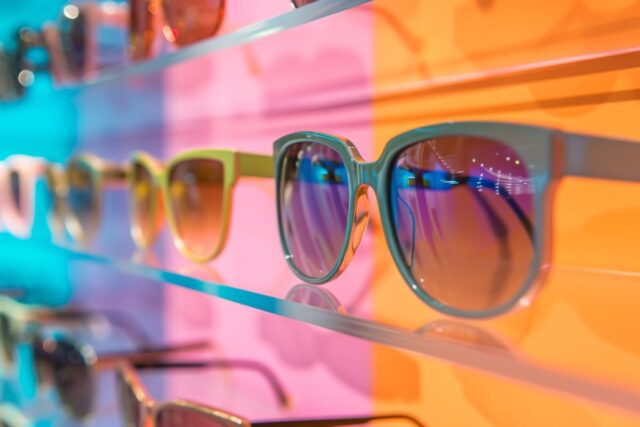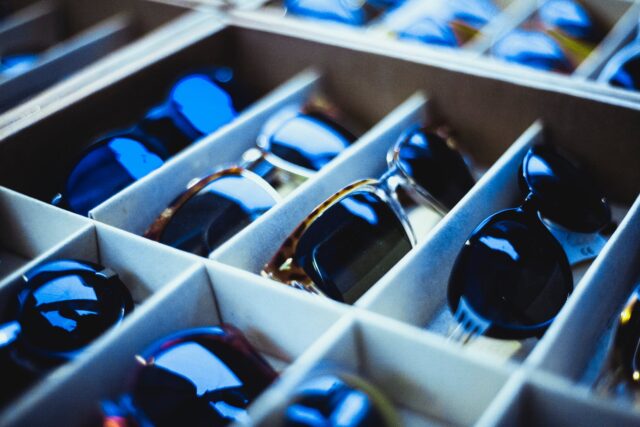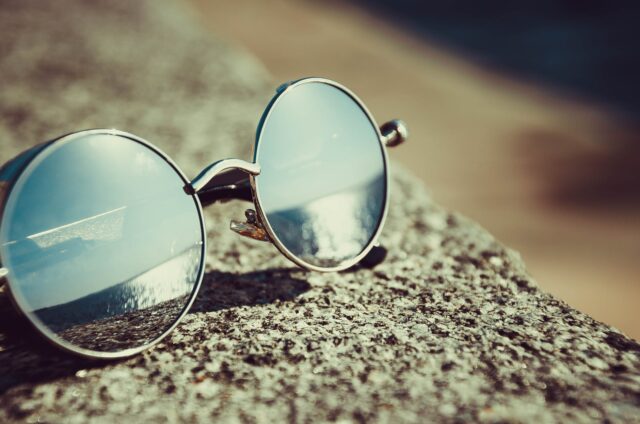
Sunglasses are a popular accessory that can drive significant sales and profits for retailers. Nevertheless, not all store layouts effectively showcase sunglasses and enable customers to easily view, compare and try on options. Optimizing floor plans and merchandizing strategies for sunglasses can pay dividends in increased sales.
Prime Real Estate: Placement and Fixtures

Sunglasses command premium real estate in profitable stores. Rather than tucking display racks in corners or along walls, allocate mid-floor space with high visibility. Island fixtures, rotary racks, tabletop displays and wall mounts that bring inventory to eye-level work well.
Stores benefiting from sunglass sales often place displays near entrances, checkout areas or alongside complementary products like hats and summer clothing.
Another key consideration is lighting. Sunglasses require bright yet indirect light that enables customers to accurately judge lens colors and see detailing on frames.
Gooseneck lamps, track lighting or daylight-balanced LEDs help achieve illumination without glare. Displays should also be accessible from multiple angles so customers can evaluate sunglasses by looking at themselves in nearby mirrors.
Merchandizing for Impact

How retailers merchandise sunglasses influence sales conversion rates. Cluster merchandise by gender, category and price point while showcasing differentiated styles.
Lead with higher-margin luxury brands, hot seasonal looks or exclusive designs to convey selection and value. Support impulse purchases with intriguing signage highlighting UV protection, polarized options, and deals like buy-one-get-one-half-off.
To boost average order values, merchandise sunglasses alongside complementary products like readers, cords, cases, and lens wipes. Cross-merchandise with summer fashion items, hats, swimwear coverups or beach bags as well.
Promoting Premium Brands

While major fashion houses like Gucci, Prada and Cartier dominate luxury eyewear, retailers can generate excellent margins from lesser-known independent brands as well.
Handmade, limited-edition sunglasses produced by artisan designers represent an intriguing, high-end proposition with markup potential. To attract affluent shoppers, be selective regarding which luxury sunglass collections you choose to carry as exclusivity conveys cachet.
For retailers with ample sunglass inventory space, carrying bulk quantities of designer sunglasses allows devoting display space to a single brand for impact. Shoppers perceive depth of inventory as conveying credibility and buying power in the category. Consider asking wholesale distributors such as Olympic Eyewear about volume discounts, reduced freight fees or cooperative advertising funds when investing in bulk designer sunglasses.
Seasonal Trends and Collections

Fashion-driven sunglass styles change continually with seasons and celebrity trends. While classic silhouettes like aviators or wayfarers endure across years, fresh colors, patterns, lens shapes and embellishments update looks.
Stock seasonal collections like neon brights in spring, nautical themes in summer and richer tones for fall. Limited edition and capsule collections tied to major events also perform well, for instance Pride styles in June or university logo frames for back-to-school.
Promote these leading sunglass trends through social media, email campaigns and influencer partnerships to stay top of mind with followers.
Partner with Suppliers

From display fixtures to custom promotions, sunglass suppliers provide resources to boost sales. Leverage suppliers’ marketing assets and advertising funds to increase exposure for hot brands. Catalog vendors and designers may offer free testers to evaluate shopper response.
Others provide training for sales associates on properly fitting frames and communicating lens options. Reps can recommend missing price points, trending materials or brand extensions basing guidance on broad market insights.
Conclusion
With some floor plan adjustments, creative merchandizing and sales associate education, stores can substantially improve productivity of sunglass displays. Keep top-selling and high-margin collections readily visible and accessible to shoppers.
Educate staff on selecting flattering eyewear, addressing vision needs and conveying advanced lens benefits. Experiment with signage, promotions and partnerships elevating your sunglass department’s status as a go-to destination for stylish shades, from value-driven to luxury buyers.













